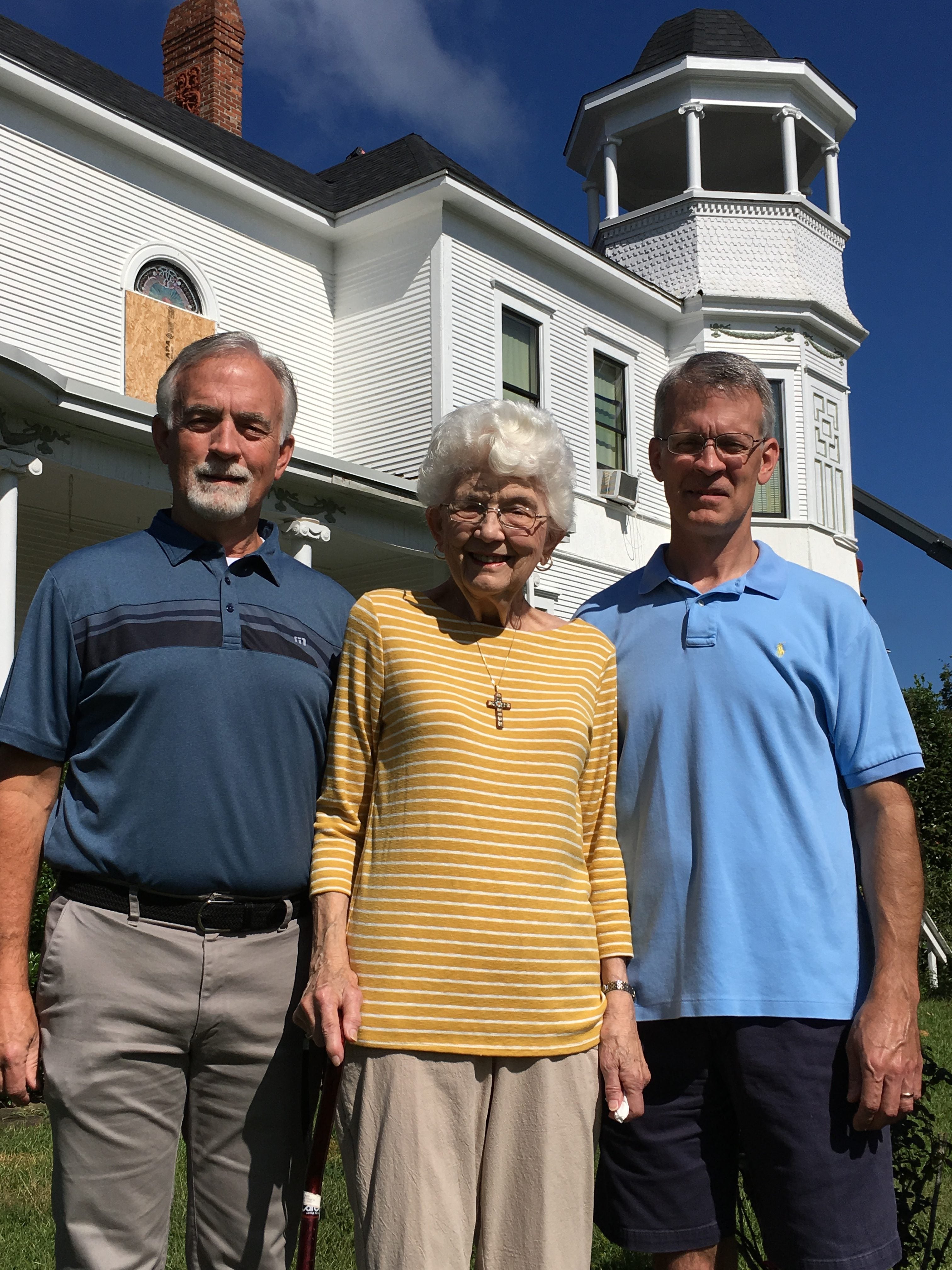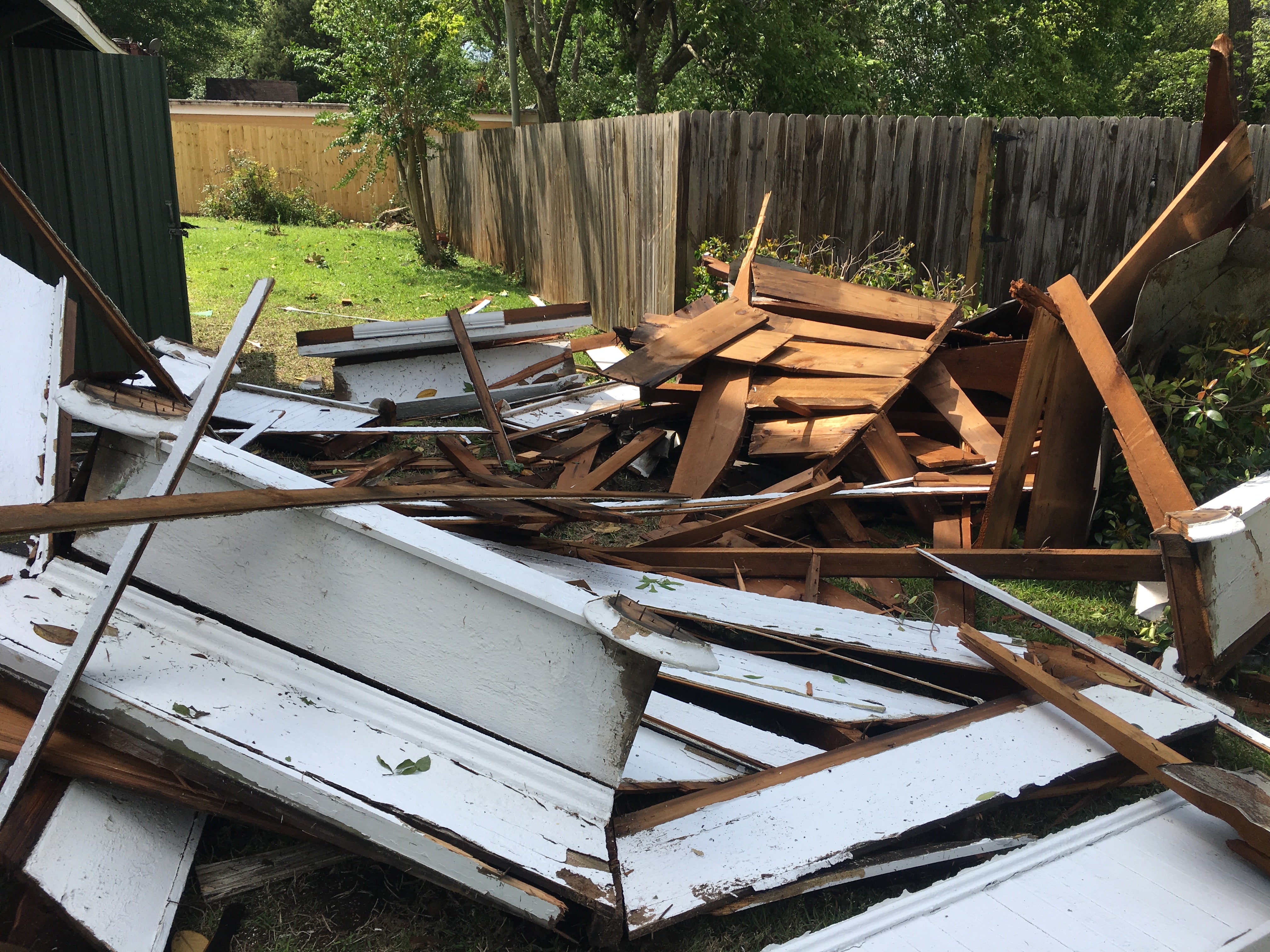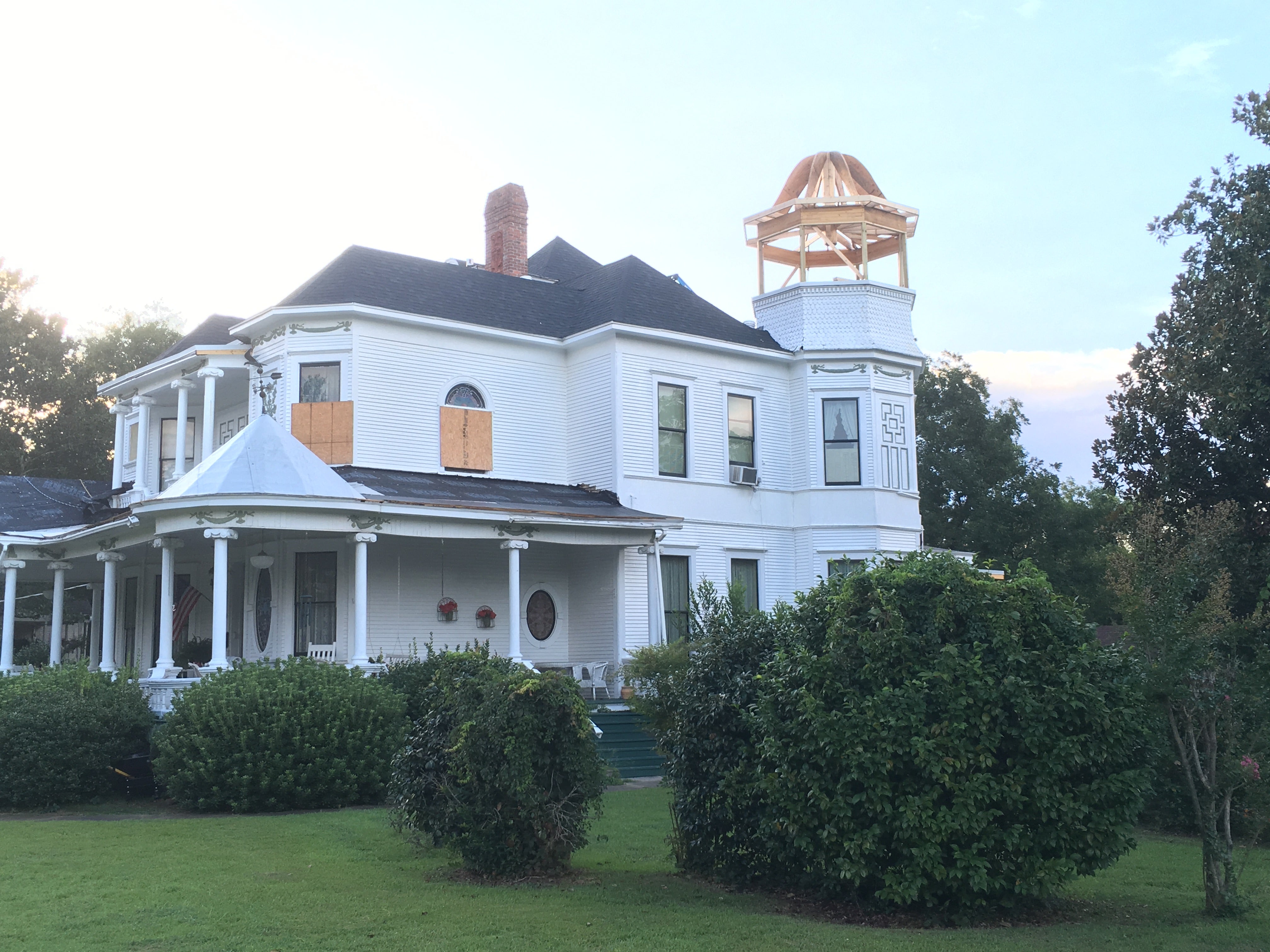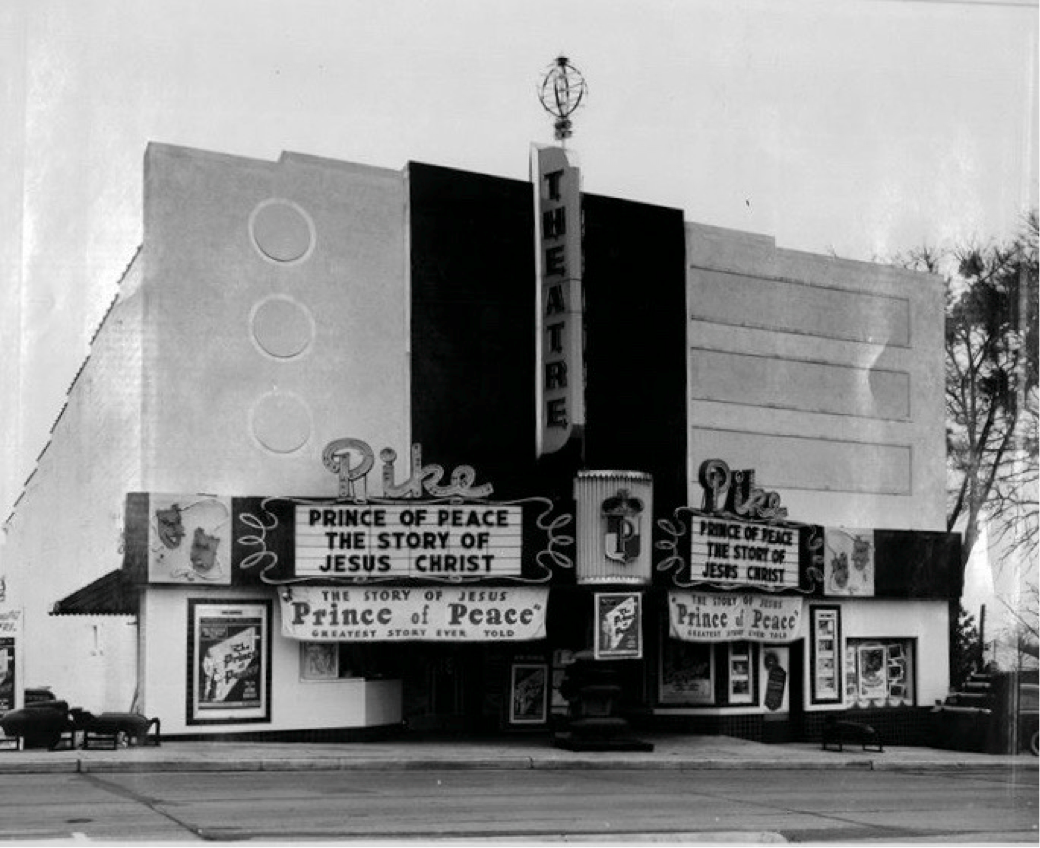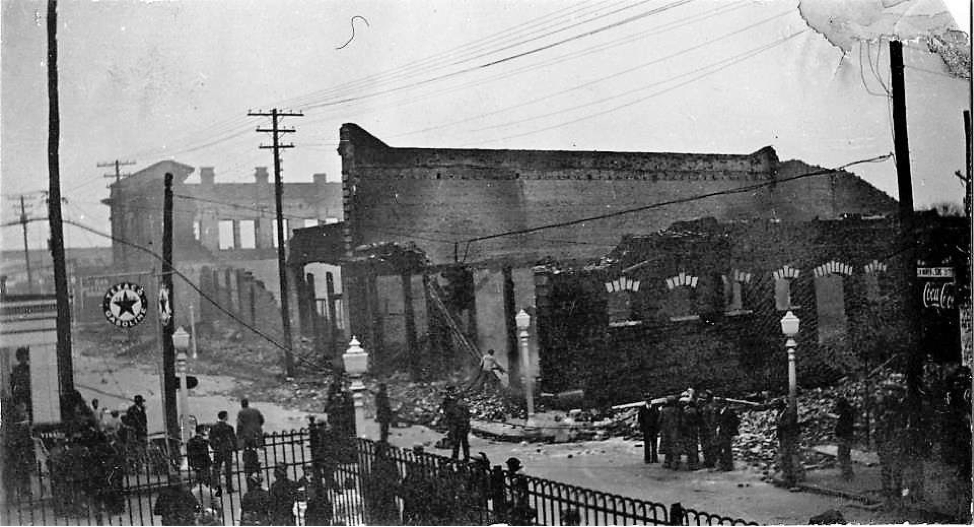Angels watching over
Published 9:38 am Tuesday, November 26, 2019
|
Getting your Trinity Audio player ready...
|
As Betty Spann was getting ready for church early on Palm Sunday morning April 14, the storm siren around the corner from her house on West College Street began its mournful wail. It was a little before 7 am.
Unbeknownst to Spann, a tornado was forming west of Troy. At 7:10 a.m., the funnel spiraled down out of the clouds and began overturning mobile homes on Hunter’s Mountain. Bearing northeast, the winds tossed a bus across Highway 231, uprooted trees on Montgomery Street and was slashing its way toward her neighborhood.
And toward her house.
As the sirens continued to sound throughout Troy, Spann’s son, Geoffrey, called to check on her. She told him that she had just heard a noise like a picture falling on the floor in one of the downstairs rooms of the house. She hadn’t heard any thunder or lightning, but concerned about the house’s three-story tower, Geoffrey told her to call next door to make sure the neighbor was safe and sound.
Thankfully, the neighbor, Alyson Gramley was okay — but not so the tower.
“Alyson, is my tower still there?” she asked.
“No, Miss Betty,” Alyson said. “It’s not there — and I don’t know where it is.”
The scorpion’s tail of the passing tornado (NWS officials later determined that it was an EF-1, packing 95 mph winds) had sheared off the top of the octagonal-sided turret that was a prominent feature of Spann’s Queen Anne-style house. Pieces of the falling cupola also damaged rooms on the northeast corner of the house.
“You could see the sky through the hole over my washing machine,” Spann said.
However, the bulk of the wreckage fell in the only place where it wouldn’t cause further damage — missing Spann’s kitchen, and crumbling in the back yard mere feet from her neighbor Gramley’s house. What was left of the cupola landed about one-car length away from Spann’s Nissan parked in the back driveway.
Worried neighbors and the mayor began arriving, as did her son. “I didn’t break down until Geoffrey came to get me,” Spann said. “I thought about what else could have happened.”
Unfortunately, there was more damage to the house in addition to the destroyed cupola — buckets of water had fallen into the back rooms, a chimney was knocked loose, electrical wiring was down, a stained-glass window lay smashed on the main staircase — and the noise she had heard was a ceiling fan crashing to the floor.
Built in 1895 by the Wood family, the 2019 Palm Sunday storm wasn’t the first time the tower on Spann’s house had suffered the wrath of Mother Nature. Unlike many of the “closed” towers and cupolas of the Victorian-era homes in Troy, Spann’s is an “open” tower, looking like a gazebo perched high above the house. Spann said that the tower had gone through two other “happenings.”
“Long years ago,” she said, lightning had struck the tower. According to a 1906 article in the Troy Messenger, at 2 p.m. on July 1, lightning struck the home owned by F.S. Wood, “tearing a hole in the tower and knocking out one column.” The article went on to report that on one was injured, but the bolt had disrupted telephone service — “which was quickly restored.”
The second “happening” took place a few years after she and her late husband, Jerry, had bought the house from Francis “Woodie” Brown in 1969. They were watching TV when they heard a thunder clap over the house that knocked out power. Going outside, Spann saw several of the eight columns from the cupola laying in a neighbor’s yard.
“The old folks say that when something happens twice, it will happen three times,” Spann said. That third time was Palm Sunday 2019.
The house had been placed on the National Register of Historic Places in 1976, and Spann was determined to restore the tower to its original appearance. She scoured her scrapbooks for old pictures of the house, consulted an aerial photograph, and even referred to pictures taken by a flying drone supplied by the insurance adjustor to prepare a restoration strategy.
“When we saw it gone,” said her youngest son, Jonathan, “there was no way we weren’t going to put the tower back.” He said that his mother’s commitment to the house was founded on her love of history and family.
“It’s more than a house to her,” said Michelle Taylor, wife of the contractor David Taylor. “She’s in love with the house — it’s personal. She raised her family there.”
The builder David Taylor really didn’t have to think twice about accepting the job. “We were blessed enough to get asked,” he said. “We love old houses, and we love antiques, so it was like a dream come true.”
Taylor said that some of the biggest challenges were figuring out how to do the job safely, as well as pairing the new construction with the original architecture.
Initially, the plan was to construct the tower off-site in the contractor’s workshop, transport it to the College Street site, then lift the structure in place using a crane. However, once put together, the decision was made to disassemble the tower and reassemble it at the house. That explains how quickly the tower went together on-site.
“There was so much work that went on behind the scenes,” Taylor said. He explained that he was amazed to see the skill and integrity of the 1895 construction. The carpenters over a century ago did a lot with a little, he added. However, using modern building materials and techniques, he said that the new structure would be stronger and more weather-resistant than the original.
Taylor also said that his “right-hand man” Jeffrey Blackmon was crucial to the job because of his wealth of knowledge about construction, architecture, and engineering.
“There were a lot of right hands on this project,” Taylor said, including Betty Spann. The enterprise could not have been completed in the fashion it was without her guidance and perseverance. “She’s been phenomenal.”
The demolition and rebuilding process became a small-scale archeological exploration. Workers found square-cut nails from the nineteenth century, and among the detritus of the damage they came across a metal ball that once perched on the pinnacle of the roof. In the tarp-draped laundry room, Spann has preserved a stack of pressed-zinc ivy leaves that once adorned the tops of the turret’s Ionic columns as well as sheet metal ridge caps and cresting.
“The first things people ask about the tower is ‘how do you get down in there?’” Spann said. An observer in the tower would have a magnificent view of one of Troy’s oldest neighborhoods.
One of the few people to have that view was Jerry Spann. In the summer between school sessions, the music teacher would climb a 40-foot ladder to paint the tower. Betty Spann said he has vivid memories of her husband in shorts and holding a brush on the top end of that ladder.
Ironically, there is no way to reach the tower from inside the house. At some time in the distant past, a door leading to the cupola was sealed both for safety and protection from the weather.
However, that didn’t stop two grandsons of the original owner from climbing out a window and shimmying across the roof to get into the tower. As things played out, one of the boys lost his fortitude and couldn’t climb back out. The Troy Fire Department came to the rescue with one of its ladder trucks and retrieved the youngster.
“After I heard that story,” said son Geoffrey, “I was never curious about going up there.”
However, his younger brother admitted to having been on the roof several times. “But there’s no way to get in the tower.”
The front parlor of the Spann house contains a pump pedal organ and an 1860s Chickering piano in keeping with the family’s love of music. The ceiling is twelve-feet high and decorated with a wreath and rose relief held up by baby-faced cherubs. Spann recalled the time when her friend, Violet Ervin, visited and looked up at the ceiling. “She began singing from an old Gospel tune, ‘Angels watching over me, my Lord.’”
Throughout the room are angel statues and pictures. On the staircase landing is a curio passed down to her from her parents, and it is chockful of cherubim and seraphim. “I collect angels,” Spann said.
As a fitting culmination to the project, Taylor’s construction team installed a copper weathervane on the pinnacle of the tower roof — a trumpeting angel.
Reflecting on the consequences of the tornado, Spann said that the damage, though extensive, could have been worse.
The angels must have been on the job on Palm Sunday past.
“I was fortunate,” Spann said.
Story by Michael Orlofsky
For more stories from the November/December edition of TroyLife, pick up a copy at various locations around the community or at The Messenger office.


